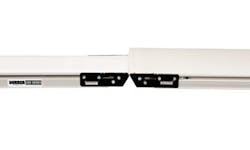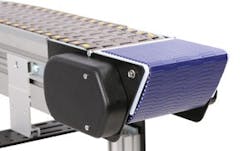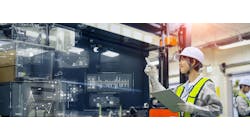- How do the quickly changing consumer trends affect the design, form and function of packaging machinery?
- How is industry addressing the shortage of experienced technical employees?
- How much importance should the packaging equipment industry place on the IIoT and the productivity gains that big data promises?
- How will IP67 and IP69K components affect machine-design decisions?
As consumers grow hungrier and hungrier for packaged goods that satisfy their appetites for variety, it is having a profound effect on manufacturers that reaches all the way back to the machine builders that make the packaging equipment used in these production operations. Our panel of experts answer questions on topics ranging from changeover and retrofits to skilled employees, the Industrial Internet of Things (IIoT) and moving components out of the cabinet.
Packaged goods manufacturers aren’t buying new capital equipment for every new consumer trend that comes along, so machine builders must incorporate more flexibility, or perhaps enhanced modularity, into their designs. Machines might have a base function with exchangeable stations that can be retrofitted to existing equipment, for example. What sorts of strategies can be created to manage these inserted options?
The requisite functionalities will be enabled by integrating a number of complementary technologies. Already we see modularity in some packaging systems. Rotary servo fillers, cappers and labelers are prime examples of the direction machinery is headed. A servo on each bottle plate provides individually controlled containers, and changing container shape or size means a recipe change, not a cam change. Depending on the type and quantity of labels to be affixed, modules called aggregates are wheeled in and out, clamped in place and production started.
Linear-track-based packaging/processing will make the term changeover largely irrelevant and will allow the same base configuration to reduce line reconfigurations to the time frames required today for changeover. So a poucher module may be removed from the track system and replaced by a rigid container-handling module.
That is exactly the kind of flexibility you're asking about, and it's just around the corner. Multiple robot modules can be synchronized to the movement of shuttles on the track with the precision of a CNC axis. Instead of change parts, the robots will select new end-of-arm tooling from a tool changer. Anti-slosh algorithms will allow high-speed, spill-free movement of open containers of liquids. The concept of restarting without homing will be a non-issue with safe motion, because lines will go into a slower safe mode instead of hitting an e-stop. These capabilities are all available today.
The process of full retrofit to the entire production floor is definitely a costly affair. We recommend using and enable-and-scale strategy. For example, old machines can be easily retrofitted to have modular machine-mount network-enabled IO-Link master blocks with IP67 or IP69K ratings. This allows bringing the technology outside of the cabinet, where it is possible to have future expandability, flexibility and utilize zero floor space. With IO-Link onboard, these devices can easily connect to the sensors and actuators in the system to add the intelligence for parametrization and in-place calibration. Of course, not all sensors need to be IO-Link. There are IO-Link-enabled I/O hubs and analog hubs that offer diagnostics capabilities and features for identification and error handling, as well as some software-based set points to enable the error-proofing and alerting mechanisms. With new machines though, we highly recommend investigating whether IO-Link and RFID technologies can be integrated into the machine and can offer the modularity in place for easily adapting to changing needs.
The process for manufacturing rarely changes. Small modular improvements can be made to increase process throughput. Changes in customer trends typically address micro demographics. Exiting mechanical-based machinery has extensive changeover procedures that inhibit cost-effect short runs. Replacement of fixed mechanical solutions with motion control and/or robots provides new flexibility. With motion control and robots, most of the changeover becomes a recipe available from the HMI.
A strategy would be to use IoT to compare the initial machine configuration and its actual use. For example, if a company buys a machine to produce in average 1,000 parts per hour, and the real average production is 800, maybe another machine configuration would better fit this need and allow reducing the power consumption.
ALSO READ: The future of packaging machinery design
Figure 5: One of the most critical areas for any integration between conveyor and machine is the transfer.
(Source: Dorner Manufacturing)
By their very nature, conveyors are designed to integrate with other equipment. Of course, some do that better than others. One of the most critical areas for any integration between conveyor and machine is the transfer (Figure 5). Some conveyors are built with a large, rounded tail, which leaves a gap at the point of transfer from the conveyor belt to the next process—machine or equipment. This type of setup is not ideal for small parts as they would fall into that gap. If the application involves transferring small parts, a small nosebar feature that eliminates the gap at point of transfer is necessary (Figure 6).
Since conveyors occasionally are moved from station to station as applications change, the transfer could become an issue. The answer here is attaching a power transfer to assist in small part transfers from one conveyor to another, or from conveyor to the next machine. Power transfers can be attached to the infeed or exit of the conveyor.
Figure 6: If the application involves transferring small parts, a small nosebar feature that eliminates the gap at point of transfer is necessary.
(Source: Dorner Manufacturing)
If you are looking to repurpose a conveyor into a different application, chances are it can be retrofitted to fit into its new role, and installing a power transfer is an example of that. Your best option is to call a reputable conveyor supplier for assistance or insight into making that change a success.
That’s because supplier’s knowledge and experience of material handling and industrial automation is invaluable when it comes to designing a system that integrates with other components of a project.
Another good piece of advice when it comes to incorporating conveyors into an existing project or as components within a new project is to fully understand all the parameters related to the application. A starting point is to consider these questions.
- What are your goals and objectives for your packaging line?
- What is the product that need to be moved?
- What is the weight, size and packaging of the product?
- What is the rate of production for the application—the desired speed of the conveyors?
- How are the conveyors going to integrate with other equipment or machinery on the line?
- Are there any product transfers involved?
- What is the projected product flow of the application—sorting, accumulation, curves, inclines, declines?
- What type of environment will the conveyor be operating in? If it will require cleaning, how extensive does that cleaning need to be?
Identifying this information will help you to start thinking about what kind of design and performance requirements you’ll need to best suit your application.
Mike Bacidore is the editor in chief for Control Design magazine. He is an award-winning columnist, earning a Gold Regional Award and a Silver National Award from the American Society of Business Publication Editors. Email him at [email protected].













